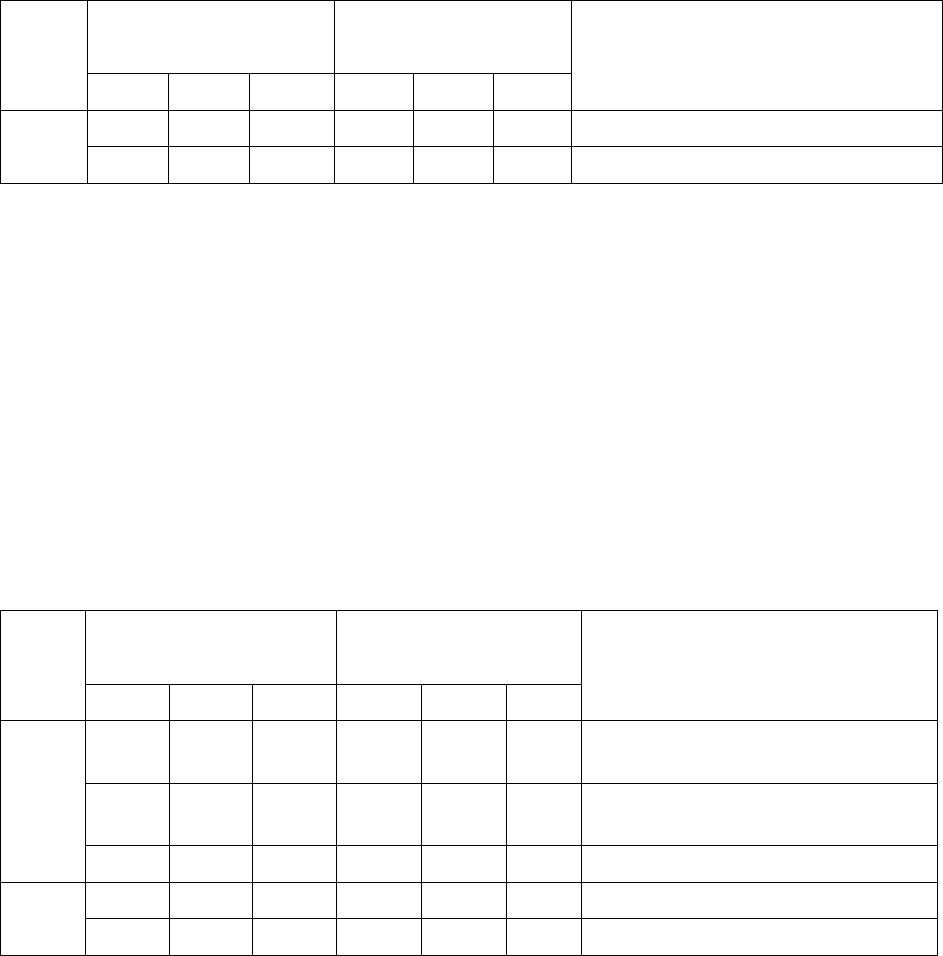Product Description Part 2

RBS 210 6 and RBS 2206 Radio Configurations
Table 22 Dual Band Configurat ions with CDU-F
Max. No. of TRXs No. of Antenna s
Cell: Cell:
No.
of
Cells
1 2 3 1 2 3
See:
3
(2)
4 4 4 2 2 2 Figure 6 on page 10
4 4 4 2 2 2 Figure 6 on page 10
(1) The middle position in the cabinet must be left empty.
(2) TMA can be selected per frequency band. If sector 2 has TMA, then the other sector wi th the
same frequency must also have TMA. If sector 2 does not have TMA, then the other sector with
the same frequency band cannot have TMA.
The following frequency band combination is possible: E-GSM/GSM 1800.
CDU-G Dual Band Configurations
In the configurations described in the following table, the hybrid combiner in
the dT RU is used.
Dual Band Configurations, CDU-G with Hybrid Combiner
Table 23 Dual Band Configurations, CDU-G with Hybrid Combiner
Max. No. of TRXs No. of Antennas
Cell: Cell:
No.
of
Cells
1 2 3 1 2 3
See:
2 8 4 4 2 Cell 1: Figure 19 on page 36
Cell 2: Figure 16 on pag e 30
4 8 2 4 Cell 1: Figure 16 on page 30
Cell 2: Figure 19 on pag e 36
4 —
(1)
4 2 2 Figure 16 on page 30
3
(2)
4 4 4 2 2 2 Figure 16 on page 30
4 4 4 2 2 2 Figure 16 on page 30
(1) The middle position in the cabinet must be left empty.
(2) TMA can be selected per frequency band. If sector 2 has TMA, then the other sector wi th the
same frequency must also have TMA. If sector 2 does not have TMA, then the other sector with
the same frequency band cannot have TMA.
The following frequency band combination s are possible: P-GSM 900/GSM
1800, E-GSM 900/GSM 1800, GSM 8 00/GSM 1800, and GSM 800/GS M 1900.
Dual Band Configuratio ns, CDU-G without Hybrid Combiner
47 (62)
EN/LZT 720 0318 Uen R5A










